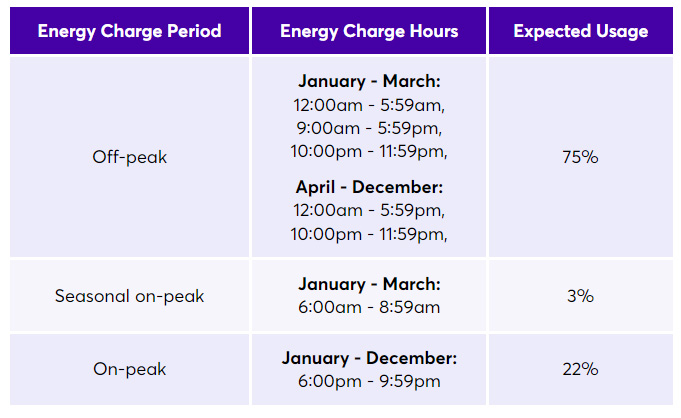If you live in an apartment or multi-unit building, you may assume electricity plans are one-size-fits-all. But that’s not the case. With PowerShift, renters can still take control of their energy costs by shifting usage to off-peak hours. You don’t need solar panels, a home battery, or a house full of smart devices. A few small adjustments can help you save and use electricity more efficiently, even in shared buildings.
Can Renters Use Time-of-Use Plans Like PowerShift?
Yes. If you pay for your own electricity and have the ability to choose your electricity provider, you can enroll in a time-of-use plan like PowerShift. It doesn’t matter whether you live in a studio, a townhome, or a high-rise apartment.
PowerShift works by charging different rates depending on the time of day. Electricity is cheaper during off-peak hours and more expensive during peak hours, usually in the afternoon and early evening. By adjusting when you use high-energy appliances, you can shift more of your usage to lower-rate times and reduce your monthly bill.
What Makes PowerShift a Good Fit for Renters?
No Special Equipment Needed
PowerShift doesn’t require solar, home batteries, or complex setups. If you have control over when you use your appliances, you can make it work for you.
Easy to Build Habits
Many apartment dwellers already follow routines that naturally align with off-peak hours. Doing laundry later in the evening, charging phones overnight, or using the dishwasher before bed are all examples of habits that fit PowerShift well.
Smart Devices Are Optional
While smart plugs and thermostats can help, they aren’t required. Even simple changes like setting your dishwasher to run on a delay or doing laundry until the nighttime can make a difference.
Works in Shared or Metered Units
As long as your apartment is individually metered and you are responsible for the electricity account, you can switch to PowerShift just like a single-family homeowner.
Apartment-Friendly Ways to Shift Usage
Charge Overnight
Phones, laptops, tablets, and electric toothbrushes can all be charged while you sleep. If you drive an electric vehicle and have access to a home charger, schedule charging for overnight hours.
Use Timers or Delays
Many dishwashers and laundry machines have built-in delay settings. Load them when convenient and set them to run during off-peak hours.
Adjust Thermostat Timing
If your apartment has a programmable thermostat, set it to pre-cool or pre-heat before peak hours begin. Then allow the temperature to drift slightly during the late afternoon and early evening.
Skip the Peak When Possible
If you're home during the day, try to avoid running appliances between during peak hours in the late afternoon and evening, when grid demand and prices are highest.

What to Know Before You Enroll
Before switching to PowerShift, confirm the following:
You pay your own electricity bill. If your landlord handles billing, you may not be able to switch.
Your unit has a standard smart meter. Most Texas apartments do, especially in deregulated areas.
Your schedule is flexible enough to shift some usage. Even small changes can make a difference.
You are comfortable with slight temperature shifts. HVAC use is a big driver of electricity use, and scheduling helps.
What If Your Landlord Pays for Electricity?
If your electricity is included in your rent, you may not be able to change your plan. However, you can still practice energy-aware habits that reduce total demand on the grid. In some cases, landlords are open to switching the property over to retail plans if tenants request it.
PowerShift isn’t just for homeowners. It works just as well in apartments, condos, and rental homes. As long as you pay your own electricity bill and can shift some of your usage to off-peak hours, you can take advantage of lower rates.
Saving money and supporting a more efficient grid does not require high-tech tools or major lifestyle changes. With just a few small tweaks, renters can get real value from a time-of-use electricity plan like PowerShift




